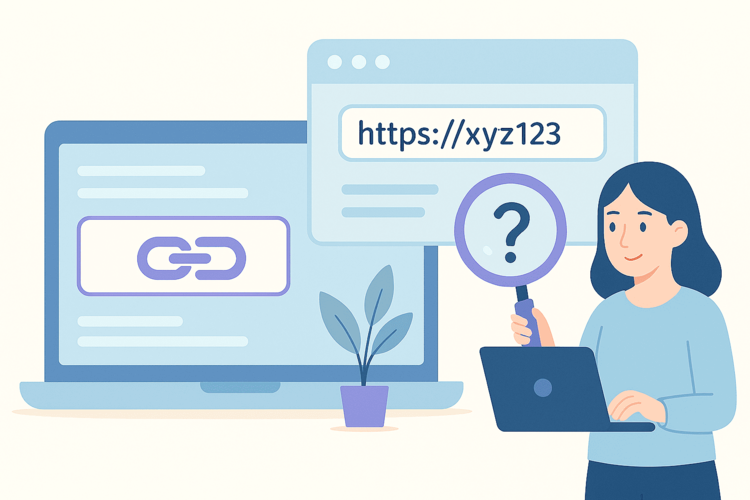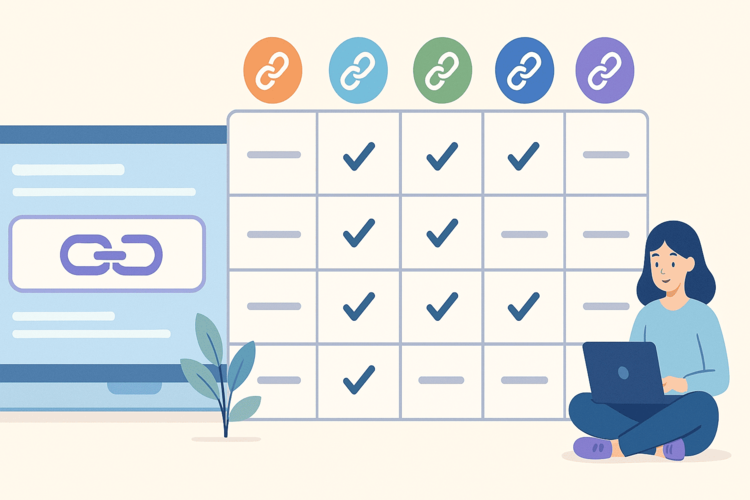Shortened links have a number of advantages over long URLs. Firstly, they are shorter and cleaner, which means they are easier to insert into texts, social networks or printed materials. Such links have improved click-through rate (CTR) and they inspire more trust than, for example, long links with UTM tags. Shortened links that were created using special services have analytics capabilities that allow you to track the number of clicks, traffic sources, user geography, etc.
Shortened links are a space saver, which is ideal for Twitter/X, SMS, QR codes or presentations. The owner of the shortened link gains control over the link, that is, you can change the final address (in some services) without changing the short link itself.
.png)
How to Create SEO-Friendly Short URLs
A shortened link itself does not directly affect search rankings, but the right structure, analytics, and user-friendliness indirectly help SEO.
Firstly, take care of the security and reputation of the link shortening service. Use only reliable services that are not blacklisted by browsers or social networks. This should be a shortening service that has been tested for years and has a good reputation on the network.
Do not duplicate shortened URLs. Each short URL should lead to unique content. This avoids confusion in SEO.
Use keywords. Include one relevant keyword that describes the content of the page. For example: brand.ly/seo-tips instead of brand.ly/abcd123.
Avoid special characters and numbers in the shortened link, i.e. use only letters and hyphens.
Use a branded short domain to create a short link if it is necessary for your business. For example: go.yourcompany.com instead of third-party shortening services.
When Should You Use Short Links for SEO?
Shortened links can be useful for SEO in general in many cases, first:
✅ On social media. Shortened links take up less space, look neater and allow you to add analytics (via UTM). This is useful for tracking the effectiveness of posts and campaigns.
✅ In marketing campaigns. For example, email newsletters, SMS, banners or offline advertising (for example, QR codes) are ideal places for short, easy-to-remember links that can be obtained using a link shortening service.
✅ For branding. When you use your own domain (for example: go.yourbrand.com/offer), it increases brand trust and recognition.
✅ For tracking traffic from specific sources. You can create unique shortened links for each channel and see where exactly the traffic came from. This will be useful for the marketing campaign as a whole.
✅In content where long links spoil the appearance. For example, in presentations, video descriptions, infographics or printed materials, it is better to use a shortened, beautiful link and not overload the content with long URLs that are of no use.
.png)
Shortened links do not improve SEO directly, but they contribute to convenience, clickability, analytics and branding, which indirectly supports the SEO strategy. Therefore, they are definitely worth using.
When you shouldn't use short links in SEO?
Despite the advantages that shortened links provide in SEO, there are still cases when they should not be used.
❌ In internal site linking. Google better understands direct, full URLs between site pages. Shortening a link can interfere with full indexing, so it is better to leave a long URL.
❌ In open SEO links (for example, in guest articles). A shortened link hides the final URL, which reduces the trust of search engines and even readers. It's better to use clean URLs with clear and presentable addresses whenever possible.
❌ If the link shortener has a bad reputation, then it is better not to use it at all. Some services are blacklisted by Google, Facebook, antiviruses. Such links may be blocked or not taken into account for SEO. Therefore, before shortening a link, check the reputation of the service you plan to use. It's better to avoid unknown or free link shortening services if you plan to use a shortened URL long-term.
❌ For eternal content that is difficult to update in the future. If the service stops working, the shortened link becomes dead. For long-term materials, it is better to use stable URLs or still use a reliable link shortening service.
❌ If the goal is to convey SEO weight. Most shortened links have the rel="nofollow" attribute or redirect 302, which does not convey SEO value. It is worth checking the functionality of the link shortening service before using it if such functionality is important for the project.
Shortened URLs should be used for marketing and tracking, but not as a replacement for basic SEO links. This is an important marketing tool that today provides a lot of useful functionality for promoting services and products.
In 2025, short links remain an important tool in digital marketing — not as a direct ranking factor, but as a means of improving click-through rate, analytics, and user experience. When used correctly, shortened links allow you to effectively manage traffic from external sources, track advertising campaigns, strengthen your brand, and increase CTR in social media and email newsletters.
However, it is important to remember that internal SEO and building direct backlinks are still based on classic, open long URLs.
🎯 A successful SEO strategy is not an either/or, but the right combination of shortened and regular links according to the context.




